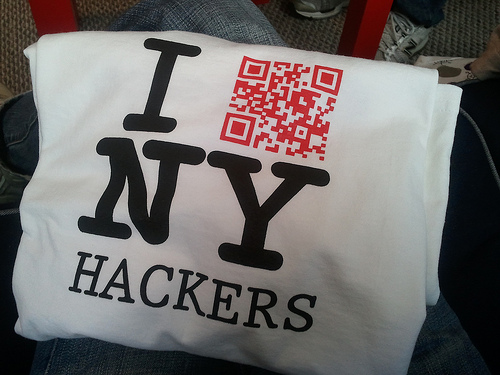Job Titles of the Future #2 - Hacker in Residence
Over the weekend while cleaning out the files of 'Stuff I meant to blog about, but never got around to it', was this piece from Fast Company - 'How LinkedIn's "Hacker_In-Residence' Transformes an Ordinary Job Into a 'Dream Job'.
The piece is a brief interview with LinkedIn's Matthew Shoup, the afore-mentioned 'Hacker-in-Residence' for the professional networking leader. And yes, that it his real title - check out Mr. Shoup's LinkedIn (natch) profile here. The Fast Company piece is set up to take us through how his role at LinkedIn evolved over time, he was hired into the much more sedate and traditional title of 'Technical Marketer', and to give some insight into the unique ways he approaches his role as H-I-R, (his 'office; is a picnic table outside, he measures interactions with colleagues like a marketer would - impressions, clicks, and conversions, etc.).
But the individual employee evolution and the quirky new job title is only part of the appeal I think. What is more interesting and meaningful in a general sense is the idea of transformation that is inherent in the story - both as an individual (moving from 'Technical Marketer' to 'Hacker-In-Residence') and organizational, (a company that is wildly successfully and growing rapidly and like many before it, is certainly in real danger of losing the speed, agility, and innovation capability that is a strength of begin really small).
How does LinkedIn manage this? Shoup attributes this to the idea of transformation:
LinkedIn gives employees the ability to transform their careers in order to do things they’re super passionate about. There’s a culture of transformation and innovation at LinkedIn, and that's one of those things that keeps employees engaged.
When you think about it, it seems incredibly simple for organizations to describe, but for some reason(s), harder to execute. And usually when founders, early employees, or other 'stars' leave growing companies it gets chalked up to 'Well, the same skills that are needed to start a company are not the same ones needed to help run an established company.' Mix in the ever-present growth the bureacracy and administration and rules, (about job titles, pay grades, office locations, PTO, and on and on), and for truly innovative types (and hackers), life as a corporate drone seems pretty unappealing.
But even established companies like LinkedIn still need these kind of people, maybe more than ever. And chances are your company needs some of them too.
How to make a start? How about crafting your own Hacker-In-Residence role, or re-writing the job description of the most creative person you have and include something like this:
'The common thread between all of the hats you will wear is that you will get to traverse multiple disciplines to solve business problems with creativity, and bring innovative ideas to life.'
Sounds like a cool job to me, and one that the people you never seem to be able to find (or keep), would be a perfect fit for.
Happy Hacking out there.
 Career,
Career,  Organization tagged
Organization tagged  Jobs,
Jobs,  Technology,
Technology,  hack,
hack,  innovation,
innovation,  titles
titles  Email Article
Email Article 
 Print Article
Print Article 
